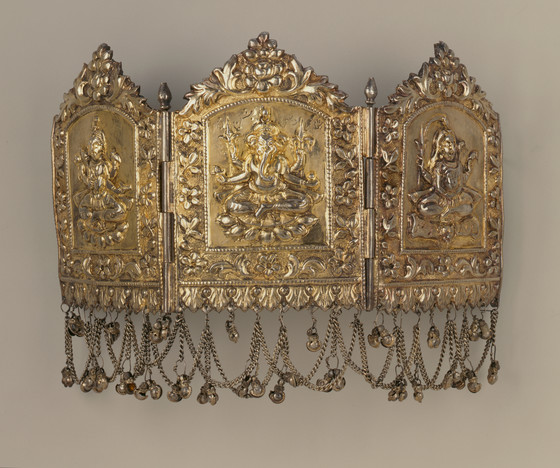Bridegroom's Wedding Crown (umlakh) Adorned with Vishnu, Ganesha, and Shiva

Please log in to add this item to your gallery.
View comments
No comments have been posted yet.
Add a comment
Please log in to add comments.
Please log in to add tags.
* Nearly 20,000 images of artworks the museum believes to be in the public domain are available to download on this site.
Other images may be protected by copyright and other intellectual property rights.
By using any of these images you agree to LACMA's Terms of Use.
Bridegroom's Wedding Crown (umlakh) Adorned with Vishnu, Ganesha, and Shiva
India, Panjab, 19th century
Jewelry and Adornments; crowns
Silver repoussé with gilding
6 3/8 x 10 3/8 x 1/4 in. (16.19 x 26.35 x 0.64cm)
Purchased with funds provided by Sunita Mula Wadhwani, Ravi Wadhwani, and Kiran Wadhwani Samuels in memory of Mulchand Navalrai Wadhwani (AC1998.54.1)
Not currently on public view


